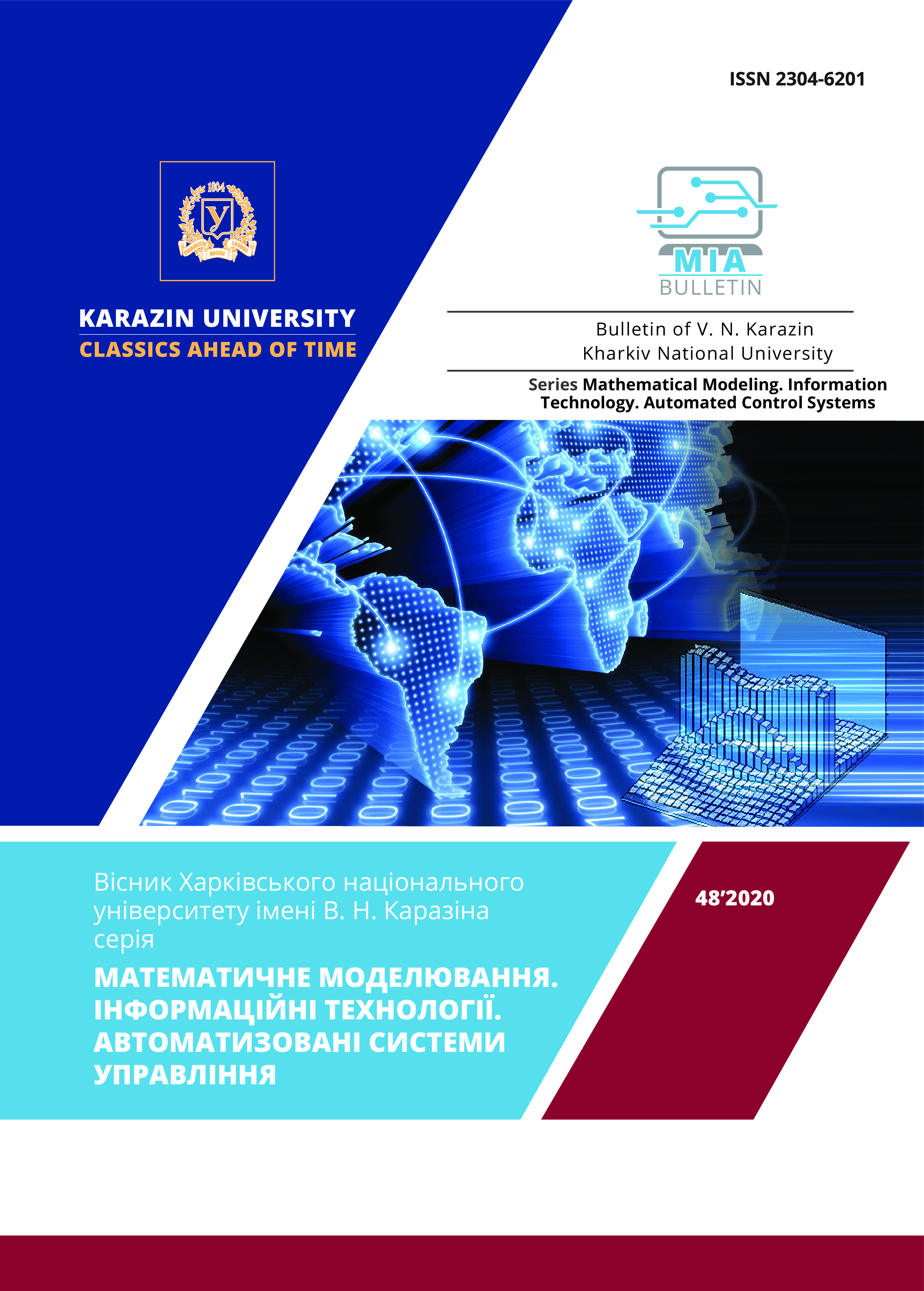Дослідження кореляцій динаміки захворювання на COVID-19 з деякими соціально-економічними факторами
Анотація
Досліджується динаміки поширення COVID-19 на основі статистичного аналізу часових рядів для числа інфікованих, одужалих, померлих, та ін. даних, які доступні з відкритих джерел. Було одібрано 60 країн, для яких були виявлені статистично значущі кореляції і отримані їх функціональні апроксимації. Виявлені найбільш інформативні показники епідемії. Показано, що вони залежать від ряду факторів, специфічних для даної країни, і повинні бути обчислені окремо для кожної хвилі та фази пандемії. Досліджені кореляції цих показників з рядом соціально-економічних факторів. Запропонована математична модель динаміки поширення захворювання у вигляді системи ЗДУ (адаптована SIR-модель) та обчислений критерій асимптотичної стійкості системи, який є показником необхідності введення локдауну. Ідентифікація параметрів математичної моделі для даної фази епідемії за рахунок аналізу статистичних даних дозволяє оцінювати зміни критерію стійкості за часом, прогнозувати та контролювати динаміку епідемії.
Завантаження
Посилання
/Посилання
M. Li, Zh. Zhang, W. Cao, etal., “Identifying novel factors associated with COVID-19 transmission and fatality using the machine learning approach”. Science of the Total Environment, 2020, 13 October, (in press) https://www.sciencedirect.com/science/article/pii/S0048969720363397
C.A. Varotsos, V.F. Krapivin, “A new model for the spread of COVID-19 and the improvement of safety”. Safety Science, 2020, Vol.132 (104962) https://doi.org/10.1016/j.ssci.2020.104962
K.J. Friston, T. Parr, P. Zeidman, et al. “Testing and tracking in the UK: A dynamic causal modelling study”. Wellcome Open Res., 2020, Vol.5, P.144 https://wellcomeopenresearch.org/articles/5-144
J.T. Wu, K. Leung, G.M. Leung, “Nowcasting and forecasting the potential domestic and international spread of the 2019-nCoV outbreak originating inWuhan, China: a modelling study”. The Lancet, 2020, Vol. 395, (10225), P. 689–697 https://doi.org/10.1016/S0140-6736(20)30260-9
V. Lopez, M. Cukic, “A dynamical model of SARS-CoV-2 based on people flow networks”. Safety Science, 2021, Vol. 134, 105034 https://doi.org/10.1016/j.ssci.2020.105034
S. Samanta, V.K. Dubey, B. Sarkar, “Measure of influences in social networks”. Applied Soft Computing Journal, 2020 (in press) https://doi.org/10.1016/j.asoc.2020.106858
N. Bacaër, A. Short, History of Mathematical Population Dynamics. Springer-Verlag, London, 2011, 162 р. https://doi.org/10.1007/978-0-85729-115-8
D. Aldila, S.H.A. Khoshnaw, E. Safitri, et al., “A mathematical study on the spread of COVID-19 considering social distancing and rapid assessment: The case of Jakarta, Indonesia”. Chaos, Solitons and Fractals, 2020, 139, 110042 https://doi.org/10.1016/j.chaos.2020.110042
K. Nikolopoulos, S. Punia, A. Schäfers, et al. “Forecasting and planning during a pandemic: COVID-19 growth rates, supply chain disruptions, and governmental decisions”. European Journal of Operational Research, 2020, (in press) https://doi.org/10.1016/j.ejor.2020.08.001
Li M., Zhang Zh., Cao W., et al. Identifying novel factors associated with COVID-19 transmission and fatality using the machine learning approach. Science of the Total Environment. 2020. 13 October, (in press). https://www.sciencedirect.com/science/article/pii/S0048969720363397
Varotsos C.A., Krapivin V.F. A new model for the spread of COVID-19 and the improvement of safety. Safety Science. 2020. Vol.132 (104962). https://doi.org/10.1016/j.ssci.2020.104962
Friston K.J., Parr T., Zeidman P., et al. Testing and tracking in the UK: A dynamic causal modelling study. Wellcome Open Res. 2020. Vol.5. P.144. https://wellcomeopenresearch.org/articles/5-144
Wu J.T., Leung K., Leung G.M. Nowcasting and forecasting the potential domestic and international spread of the 2019-nCoV outbreak originating inWuhan, China: a modelling study. The Lancet. 2020. Vol. 395(10225), P. 689–697. https://doi.org/10.1016/S0140-6736(20)30260-9
Lopez V., Cukic M. A dynamical model of SARS-CoV-2 based on people flow networks. Safety Science. 2021. Vol. 134. 105034. https://doi.org/10.1016/j.ssci.2020.105034
Samanta S., Dubey V.K., Sarkar B. Measure of influences in social networks. Applied Soft Computing Journal. 2020. (in press) https://doi.org/10.1016/j.asoc.2020.106858
Bacaër N., Short A. History of Mathematical Population Dynamics. Springer-Verlag, London. 2011. 162 р. https://doi.org/10.1007/978-0-85729-115-8
Aldila D., Khoshnaw S.H.A., Safitri E., et al. A mathematical study on the spread of COVID-19 considering social distancing and rapid assessment: The case of Jakarta, Indonesia. Chaos, Solitons and Fractals. 2020. 139. 110042 https://doi.org/10.1016/j.chaos.2020.110042
Nikolopoulos K., Punia S., Schäfers A., et al. Forecasting and planning during a pandemic: COVID-19 growth rates, supply chain disruptions, and governmental decisions. European Journal of Operational Research. 2020. (in press) https://doi.org/10.1016/j.ejor.2020.08.001




